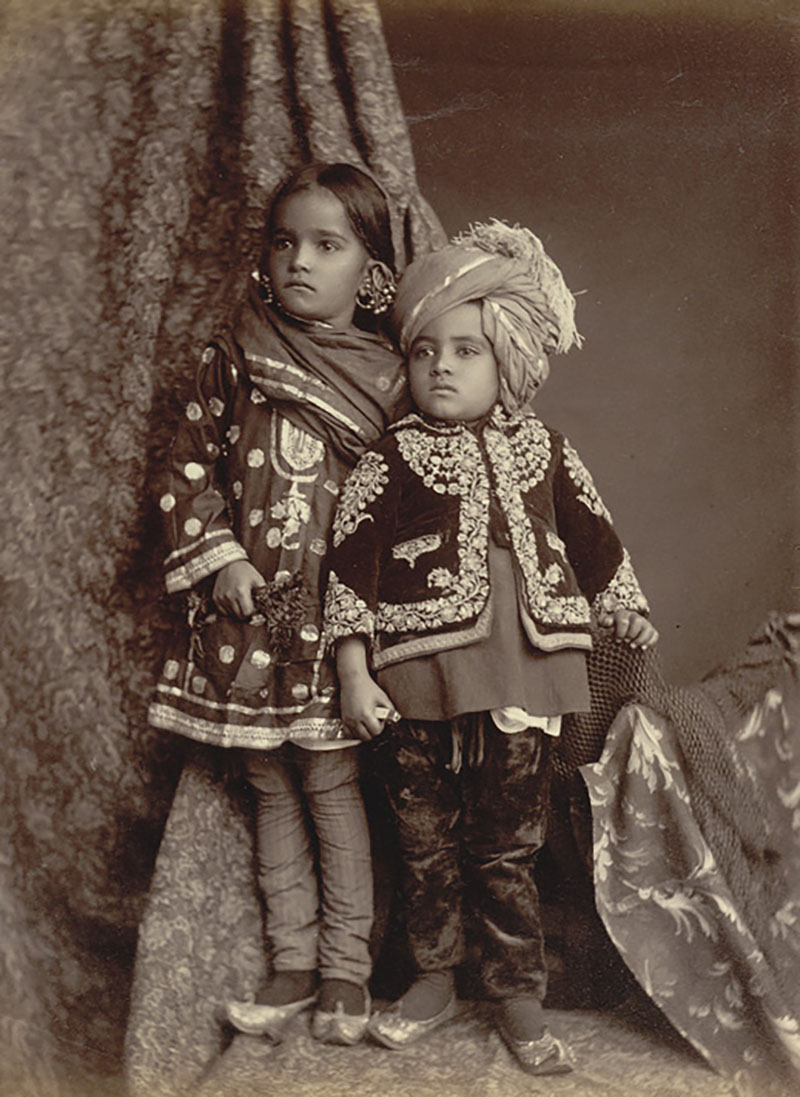A type of long trouser traditionally worn in north and west India, the chudidaar is distinguished by its loose waist panel fastened by a drawstring, a heavily gathered seat and narrow, tapering legs gathered at the ankle. The name of the garment derives from the Hindi word chudi, which means bangle(s), and refers to the bangle-like gathers formed at the base of the leg. The lower garment, of Mughal, descent is an adaptation of the pyjama, which until the mid-nineteenth century had been typically long and loose-fitting, and worn exclusively by men. The chudidaar is traditionally worn with a kurta or kameez by both men and women.
Between the seventeenth and nineteenth centuries, courtly fashions underwent a number of changes, mostly in the kingdom of Oudh (part of present-day Uttar Pradesh), but the loose-fitting and flowy pyjama continued to be worn as a mark of nobility. during the reign of Nawab Shuja-ud-Daulah (1754–75 CE), the courtiers and nobility would wear long jamas and the balabar (a long tunic with multiple fastenings) over the wide-girthed pyjamas, inspired by fashions of Delhi. In the early nineteenth century, the tighter-fitting outer garments angarkha and the achkan came into vogue, along with the heavily pleated kalidar pyjama and the baggy arz ke painchon ka paijama. After a war between Awadh and Ranjit Singh of the Sikh Empire in 1827, a type of trousers that were short and tight below the knee, known as the ghuttana, worn by the Sikh infantry, grew popular among the soldiers of Awadh. It is believed that this style was adopted in Awadh and combined with the Mughal izar — loose-legged, drawstring pants — to yield the composite style of the chudidaar as it is known now.
Today, the chudidaar is worn as part of ceremonial or festive ensembles as well as for everyday dressing. It is available in cotton, silk and various synthetic and stretchable fabrics in a variety of colours.







